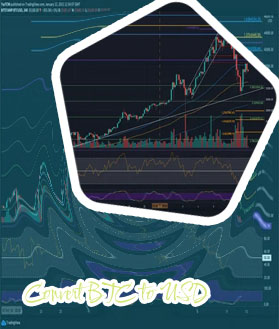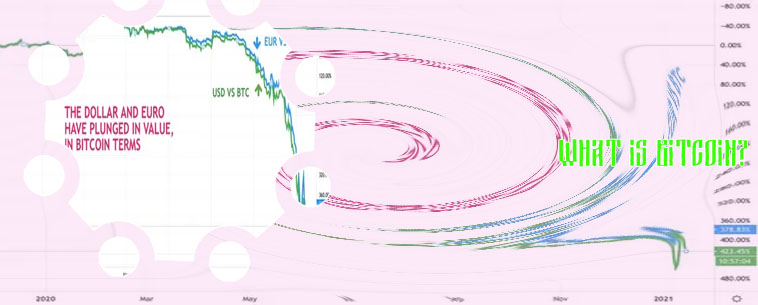Bitcoin price live

Cryptocurrency enthusiasts and investors are constantly monitoring the price of bitcoin in USD, as it is one of the most popular and widely traded cryptocurrencies in the market. Understanding the factors that influence the price of bitcoin can help individuals make informed decisions about buying, selling, or holding onto their digital assets. To provide a comprehensive view on this topic, here are four articles that delve into the various aspects of the cryptocurrency bitcoin price in USD.
The Impact of Market Sentiment on Bitcoin Price in USD
The rollercoaster ride of Bitcoin prices continues to captivate the attention of investors worldwide, with market sentiment playing a crucial role in determining the value of the popular cryptocurrency. The recent fluctuations in Bitcoin price in USD have once again highlighted the impact of investor sentiment on the digital asset.
Market sentiment refers to the overall feeling or attitude of investors towards a particular asset or market. In the case of Bitcoin, positive sentiment can drive prices higher as investors rush to buy, while negative sentiment can lead to a sell-off and a decline in prices. This dynamic relationship between market sentiment and Bitcoin price in USD has been evident in recent weeks, with prices experiencing sharp swings in response to changing investor sentiment.
One key factor driving market sentiment is the level of institutional interest in Bitcoin. The recent entry of major financial institutions into the cryptocurrency space has fueled optimism among investors, leading to a surge in prices. Conversely, regulatory concerns and negative news about the cryptocurrency industry can dampen sentiment and lead to a sell-off.
Understanding the impact of market sentiment on Bitcoin price in USD is crucial for investors looking to navigate the volatile cryptocurrency market. By staying informed about market sentiment indicators and trends, investors can make more informed decisions about when to buy or sell Bitcoin. This article sheds light on the importance of monitoring market sentiment
Analyzing Historical Trends to Predict Bitcoin Price in USD
In recent years, the price of Bitcoin has experienced significant fluctuations, making it a popular topic of discussion among investors and researchers alike. By analyzing historical trends, researchers have attempted to predict the future price of Bitcoin in USD.
One key trend that has emerged is the correlation between Bitcoin's price and various external factors such as market demand, regulatory developments, and macroeconomic indicators. For example, the price of Bitcoin tends to increase during times of economic uncertainty, as investors seek alternative assets to hedge against inflation and economic instability.
Additionally, historical data shows that the price of Bitcoin is highly volatile, with sharp fluctuations occurring within short periods. This volatility makes it challenging to predict the future price of Bitcoin accurately. However, by using statistical models and machine learning algorithms, researchers have been able to identify patterns in the historical data that can help forecast future price movements.
Overall, analyzing historical trends to predict the price of Bitcoin in USD is crucial for investors looking to make informed decisions about their investments in the cryptocurrency market. By understanding the underlying factors that influence Bitcoin's price, investors can better navigate the volatile nature of the market and potentially maximize their returns. This research is essential for anyone interested in the topic of cryptocurrency and its impact on the global financial landscape.
Regulatory Developments and Their Effect on Bitcoin Price in USD
In recent years, Bitcoin has become a hot topic in the world of finance and investment. One of the key factors that can influence the price of Bitcoin is regulatory developments. These regulations can have a significant impact on the value of Bitcoin in USD, as they can affect its adoption, use, and overall market sentiment.
Here are some key ways in which regulatory developments can influence the price of Bitcoin:
-
Legalization and Regulation: When governments legalize and regulate Bitcoin, it can lead to increased adoption and mainstream acceptance, which can drive up the price of Bitcoin.
-
Bans and Restrictions: On the other hand, when governments ban or impose restrictions on Bitcoin, it can create uncertainty and fear in the market, leading to a drop in the price of Bitcoin.
-
Taxation: Taxation policies on Bitcoin can also impact its price. Higher taxes can reduce the profitability of Bitcoin investments, leading to a decrease in demand and a subsequent drop in price.
-
Security and Compliance: Regulations aimed at increasing security and compliance in the Bitcoin market can help build trust among investors and traders, leading to a positive impact on the price of Bitcoin.
-
Market Sentiment: Overall, regulatory developments can significantly influence market sentiment towards Bitcoin, leading to fluctuations in its price in USD. Investors
Comparing Bitcoin Price in USD with Other Cryptocurrencies
Bitcoin, the pioneer of cryptocurrencies, has been a popular choice for investors and traders alike. With its increasing popularity, many other cryptocurrencies have emerged in the market, each with its own unique features and characteristics. One common way to evaluate the performance of cryptocurrencies is by comparing their prices in USD.
When comparing Bitcoin's price in USD with other cryptocurrencies, it is important to consider factors such as market capitalization, trading volume, and overall market sentiment. Bitcoin's price movements often influence the prices of other cryptocurrencies, making it a key indicator for the overall market trend.
Here are 3 key points to consider when comparing Bitcoin's price in USD with other cryptocurrencies:
-
Market Dominance: Bitcoin remains the dominant cryptocurrency in terms of market capitalization and trading volume. Its price movements often set the tone for the entire cryptocurrency market.
-
Volatility: While Bitcoin is known for its price volatility, other cryptocurrencies may exhibit even higher levels of volatility. Traders should be aware of the risks involved when trading cryptocurrencies with higher volatility.
-
Diversification: Investors looking to diversify their cryptocurrency holdings may consider investing in a mix of Bitcoin and other cryptocurrencies. Diversification can help reduce overall risk exposure and potentially enhance returns.

- Where to buy catgirl crypto
- Where can i buy safemoon crypto
- How does btc mining work
- Dogecoin to $1
- Shiba inu coin cryptocurrency
- Coinbase crypto list
- Bit coin price in us
- Crypto com nft
- Bit price
- Coinbase cryptocurrency prices
- Shop with crypto
- Cryptocurrency app
- 270 addresses are responsible all cryptocurrency
- New crypto coins
- Where to buy crypto
- Buy bitcoin online
- How to spend bitcoin
- How to buy on cryptocom
- 1 cent crypto
- Cryptocom cards
- How much is bitcoin
- Top cryptos today
- Cryptocurrency bitcoin price
- All crypto coins
- Price of bitcoins in usd
- Ethereum price coinbase
- How much is 1eth
- How does bit coin work
- Where to buy ethereum
- Buy bitcoin uk
- Dogecoin news
- Bitcoin strength indicator
- Crypto earn interest
- The crypto
- Crypto coin wallet
- Crypto wallet app
- Usd to eth
- Where to buy bitcoin
- Cryptocurrency software
- Best crypto to buy
- Binance dogecoin usd
- Today's bitcoin cash price
- Bitcoin gas fee
- Btc miner app
- Crypto and blockchain
- Cryptocom sell to fiat wallet
- Celo crypto price
- Buy eth with btc
- Bitcoin starting price
- Ave crypto
- Buy sand crypto
- Bitcoin futures
- Bitcoin crash prediction
- Btc live price
- Apps cryptocurrency
- How to withdraw money from cryptocom
- Top cryptos
- How much is dogecoin